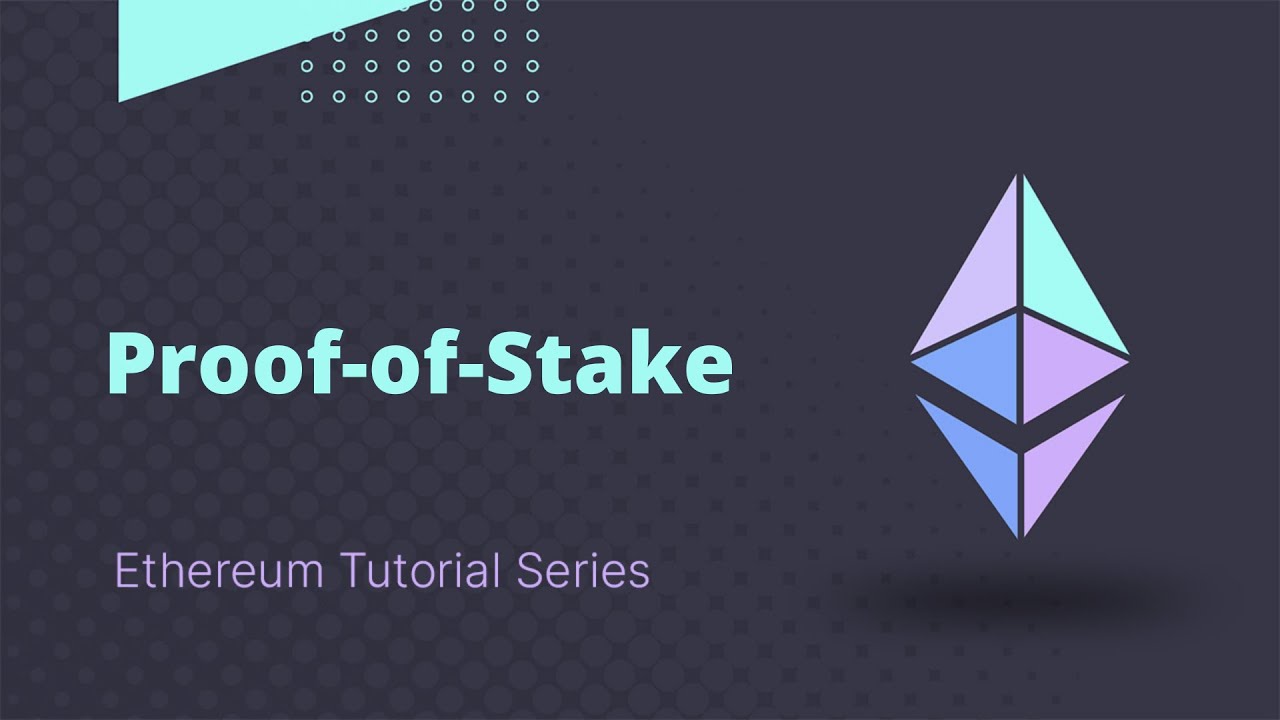Introduction
Welcome to the exciting world of Ethereum staking! If you’re curious about Ethereum’s transition from a proof-of-work (PoW) to a proof-of-stake (PoS) consensus mechanism, you’ve come to the right place. Ethereum staking has been a much-anticipated development in the cryptocurrency community, promising a more efficient and secure network. In this article, we will explore what Ethereum staking is, its benefits, the timeline for Ethereum 2.0 development, and the factors that could affect the unlocking of Ethereum staking.
Ethereum, the second-largest cryptocurrency by market capitalization, has been running on a PoW system since its inception. However, this mechanism has its drawbacks, including high energy consumption and scalability issues. Ethereum 2.0 aims to address these limitations by transitioning to PoS, with staking being a crucial component of this upgrade.
So, what exactly is Ethereum staking? Staking involves participating in the network’s consensus process by holding and “staking” a certain amount of Ethereum. Instead of relying on miners to validate transactions and secure the network, validators are appointed to propose and attest to blocks. Validators are chosen based on the amount of Ethereum they hold and are willing to “lock up” as collateral.
The switch to PoS brings several benefits to the Ethereum network. First and foremost, it greatly reduces energy consumption, as there is no need for extensive computational power to solve complex mathematical puzzles. This makes Ethereum more environmentally friendly and sustainable in the long run.
Another advantage of Ethereum staking is improved scalability. The PoS consensus mechanism allows for faster block generation times, leading to increased transaction throughput. This is a crucial aspect for Ethereum, considering the growing demand and the need to support decentralized applications (dApps) and smart contracts.
Now that we have a basic understanding of Ethereum staking, let’s delve into the development timeline of Ethereum 2.0. It’s important to note that the transition to PoS is not a one-time event but rather a gradual process involving multiple phases, each with its own milestones and objectives.
What is Ethereum Staking?
Ethereum staking is a fundamental concept in the Ethereum 2.0 upgrade that aims to transition the Ethereum network from a proof-of-work (PoW) to a proof-of-stake (PoS) consensus mechanism. In a PoS system, instead of relying on highly resource-intensive mining processes, validators are chosen to validate transactions and secure the network by staking their own cryptocurrency holdings as collateral.
Staking Ethereum involves locking up a certain amount of ETH in a specialized wallet called a staking wallet. The amount of ETH required to become a validator can vary depending on the network’s parameters, but it generally ranges from 32 ETH to a higher amount. This staked ETH acts as a guarantee that the validator will act honestly and follow the protocol rules.
Once a validator has staked their ETH, they can participate in the consensus process by proposing and validating blocks. Validators are incentivized to act honestly and contribute to the security and stability of the network. In return for their involvement, validators can earn rewards in the form of additional ETH. The exact reward distribution is determined by the consensus algorithm and the network’s parameters.
Ethereum staking not only benefits the validators but also the entire Ethereum network. By switching to a PoS mechanism, Ethereum becomes more energy-efficient and sustainable compared to the resource-intensive PoW model. This is because staking does not require massive computational power, reducing the network’s overall energy consumption and environmental impact.
Furthermore, staking Ethereum helps to address the problem of network scalability. In a PoS system, block generation times are significantly faster compared to the PoW model, allowing for greater transaction throughput and scalability. This is particularly important for Ethereum, which aims to support a broad range of decentralized applications (dApps) and smart contracts.
Overall, Ethereum staking offers individuals the opportunity to actively contribute to the Ethereum network’s security and earn rewards in return. It not only helps to make Ethereum more sustainable and scalable but also aligns with the decentralized ethos of the cryptocurrency community.
Benefits of Ethereum Staking
Ethereum staking comes with a myriad of benefits for both individuals and the Ethereum network as a whole. Let’s explore some of the key advantages of participating in Ethereum staking:
- Consistent Passive Income: One of the most appealing aspects of Ethereum staking is the potential to earn a consistent passive income. Validators who actively participate in the consensus process by proposing and validating blocks are rewarded with additional ETH. These rewards are distributed based on the amount of ETH staked and the validator’s level of participation. With Ethereum’s growing popularity and adoption, staking offers an opportunity for individuals to generate passive income from their cryptocurrency holdings.
- Enhanced Network Security: Ethereum staking plays a vital role in maintaining the network’s security and integrity. Validators who stake their ETH have a financial incentive to act honestly and follow the consensus protocol. By participating in the consensus process, they help validate transactions, secure the network against malicious attacks, and maintain the overall reliability of the blockchain. This increased network security builds trust and confidence among users, making Ethereum a robust ecosystem for various decentralized applications and financial activities.
- Energy Efficiency and Sustainability: Unlike the traditional proof-of-work (PoW) mechanism that relies on energy-intensive mining processes, staking Ethereum significantly reduces the network’s energy consumption. Validators do not need to solve complex mathematical puzzles or use extensive computational power. This transition to a more energy-efficient proof-of-stake (PoS) mechanism makes Ethereum a greener and more sustainable platform, aligning with environmental conservation efforts.
- Improved Scalability: Ethereum staking also has a positive impact on the scalability of the network. With the faster block generation times enabled by the PoS model, more transactions can be processed within a given timeframe. This enhanced scalability is crucial for Ethereum’s growth and its ability to support a wide range of decentralized applications, smart contracts, and decentralized finance (DeFi) protocols. Staking helps Ethereum handle the increasing transaction volumes and provides a foundation for innovation and development within the ecosystem.
- Active Participation and Governance: By staking Ethereum, individuals become active participants in the Ethereum ecosystem, contributing to the network’s decision-making process and governance. Validators often have the opportunity to vote on proposals and upgrades that impact the future direction of the platform. This active involvement allows stakers to have a voice and influence the development of Ethereum, reinforcing its decentralized nature.
In summary, Ethereum staking offers attractive benefits like passive income potential, enhanced network security, energy efficiency, improved scalability, and active participation in governance. These advantages make Ethereum staking an appealing option for crypto enthusiasts looking to not only earn rewards but also actively contribute to the growth and success of the Ethereum network.
Timeline of Ethereum 2.0 Development
The development of Ethereum 2.0, which includes the transition from a proof-of-work (PoW) to a proof-of-stake (PoS) consensus mechanism, has been a complex and multi-stage process. Let’s take a closer look at the timeline of Ethereum 2.0 development:
- Phase 0: Beacon Chain Launch (December 1, 2020): The first phase of Ethereum 2.0 was the launch of the Beacon Chain, which serves as the backbone of the new PoS consensus mechanism. The Beacon Chain is responsible for managing validators, coordinating consensus, and introducing shard chains in later phases. This marked a significant milestone, as it demonstrated the successful deployment of PoS on the Ethereum network.
- Phase 1: Shard Chains (Expected in 2021): Phase 1 focuses on the implementation of shard chains, which are parallel chains designed to increase the network’s capacity and scalability. These shard chains will enable Ethereum to process multiple transactions and smart contracts simultaneously, significantly enhancing its overall throughput. Although the exact timeline for the launch of shard chains is not yet confirmed, it is expected to occur in 2021.
- Phase 1.5: Merge with Ethereum Mainnet: Phase 1.5 involves the integration of the Ethereum 1.0 mainnet with the Ethereum 2.0 Beacon Chain and shard chains. This phase essentially marks the final transition from the current PoW-based Ethereum network to the PoS-based Ethereum 2.0 network. The merge is anticipated to occur once shard chains are operational, allowing for a seamless transfer of existing Ethereum balances and smart contracts to the upgraded network.
- Phase 2: Full Functionality and Crosslinks (Expected in 2022 and Beyond): Phase 2 is the final phase of Ethereum 2.0 development and aims to bring full functionality to the network. It will introduce more advanced features, such as state execution on shard chains and the ability to execute cross-shard transactions. Phase 2 is expected to be implemented after the successful completion of Phase 1.5 and has a tentative timeline for 2022 and beyond.
It’s important to note that the timelines mentioned above are subject to change based on the progress of development and the successful completion of each phase. Ethereum 2.0 is being developed by a dedicated team of developers and researchers, who are working diligently to ensure a smooth transition and the successful implementation of this groundbreaking upgrade.
The Ethereum community also plays a vital role in the development process, with ongoing discussions, testing, and feedback loop involving stakeholders and enthusiasts. The collective effort of developers, validators, and participants in the ecosystem contributes to the overall success and adoption of Ethereum 2.0.
As we actively follow the milestones of Ethereum 2.0, it is clear that the development of this upgrade is a significant undertaking that requires careful planning and execution. The transition from PoW to PoS represents a major step forward for Ethereum, as it seeks to overcome the limitations of the current system and unlock new potentials for scalability, security, and sustainability.
When Will Ethereum Staking Be Available?
Ethereum staking has been a topic of great anticipation and interest within the cryptocurrency community. The availability of Ethereum staking primarily depends on the development timeline of Ethereum 2.0. While some aspects of Ethereum staking are already accessible, the full implementation of staking rewards and benefits is still in progress.
With the launch of the Beacon Chain in December 2020, Ethereum staking became possible. The Beacon Chain serves as the PoS infrastructure for Ethereum 2.0 and allows users to become validators by staking their ETH. Validators are crucial for maintaining network security and consensus.
However, it’s important to note that although users can currently stake their ETH on the Beacon Chain, earning staking rewards is not yet fully enabled. This functionality is expected to be implemented in a later phase of the Ethereum 2.0 development, specifically after the completion of Phase 1.5 and Phase 2.
Phase 1.5, referred to as the Merge, is when the Ethereum mainnet will be transitioned to Ethereum 2.0. This phase merges the existing Ethereum 1.0 network with the Ethereum 2.0 Beacon Chain and shard chains, combining the strengths of both systems. Once this merge occurs, users who have staked their ETH on the Beacon Chain will begin to accrue staking rewards on the upgraded network.
The timeline for the complete availability of Ethereum staking rewards is still uncertain, as the successful implementation of shard chains and Phase 2 is necessary. While shard chains are projected to launch sometime in 2021, the completion of Phase 2 and the realization of full functionality are expected to take place in 2022 and beyond.
It’s important to stay updated with official communications from the Ethereum development team and participate in community discussions to stay informed about the readiness of Ethereum staking rewards. The Ethereum ecosystem is constantly evolving, and regular updates regarding the progress of Ethereum 2.0 and the availability of staking rewards will be shared with the community.
While the full availability of Ethereum staking rewards may still be some time away, individuals can still take advantage of the opportunity to stake their ETH and support the network on the Beacon Chain. By becoming validators, participants can actively contribute to the security and decentralization of the Ethereum network. As Ethereum 2.0 continues to progress, users can look forward to reaping the benefits of staking rewards once they become available.
Factors Affecting the Unlocking of Ethereum Staking
The availability and unlocking of Ethereum staking rewards are influenced by various factors related to the development and adoption of Ethereum 2.0. These factors play a crucial role in determining when users can fully enjoy the benefits of staking their ETH. Let’s explore some of the key considerations:
- Development Progress: The development progress of Ethereum 2.0 is a significant factor affecting the unlocking of staking rewards. As Ethereum moves through its multi-phase upgrade, completion of specific milestones, such as the launch of shard chains and full functionality implementation in Phase 2, is necessary before staking rewards can be fully realized. Delays in development timelines may prolong the availability of staking rewards.
- Network Stability: The stability and security of the Ethereum 2.0 network are critical factors in unlocking staking rewards. As Ethereum transitions from the current proof-of-work (PoW) model to the proof-of-stake (PoS) consensus mechanism, extensive testing and auditing are undertaken to ensure the network’s robustness. Validators and users need to have confidence in the stability and security of the ecosystem before staking rewards can be fully activated.
- Adoption and Validator Participation: The active participation of validators is vital for the functioning of the Ethereum staking system. The number of validators staking their ETH on the Beacon Chain plays a role in the overall network security and the distribution of staking rewards. Lower validator participation may delay the unlocking of staking rewards, as it could affect the network’s ability to reach consensus effectively.
- Community Engagement: The engagement and involvement of the Ethereum community are influential in shaping the future of staking rewards. Community feedback and discussions, as well as participation in testnets and public test phases, help identify and address any potential issues or vulnerabilities. Community engagement also contributes to creating a consensus on important decisions related to staking rewards, enhancing the overall effectiveness and acceptance of the Ethereum 2.0 upgrade.
- Launch of Shard Chains: The successful launch and integration of shard chains are crucial for unlocking the full potential of Ethereum staking rewards. Shard chains enable parallel processing of transactions and smart contracts, significantly enhancing network scalability. The availability of shard chains is expected to occur as part of Phase 1, and their operational status will be a determinant in when staking rewards are fully enabled.
It is important to note that Ethereum’s development and the unlocking of staking rewards are dynamic processes. Factors can evolve over time, and the Ethereum community, developers, and stakeholders actively monitor and address any challenges or barriers that may impact the availability of staking rewards. Consistent progress, regular updates, and communications from the Ethereum development team and the broader community can provide insights into the ongoing efforts and eventual unlocking of staking rewards.
As Ethereum 2.0 continues to advance towards full implementation, addressing these factors and achieving milestones are essential for establishing a secure and efficient staking ecosystem. Through collaborative efforts and active engagement, the Ethereum community anticipates the eventual unlocking of staking rewards, contributing to a sustainable and thriving Ethereum network.
How to Participate in Ethereum Staking
Participating in Ethereum staking allows individuals to support the Ethereum network and earn rewards by becoming validators. Validators play a crucial role in the transition from a proof-of-work (PoW) to a proof-of-stake (PoS) consensus mechanism in Ethereum 2.0. Here are the steps to participate in Ethereum staking:
- Educate Yourself: Begin by familiarizing yourself with the concepts and requirements of Ethereum staking. Understand the transition to Ethereum 2.0, the role of validators, the PoS consensus mechanism, and the risks and rewards associated with staking your ETH. Stay updated with official Ethereum communications and engage with the community to gather relevant information.
- Acquire Sufficient ETH: To become a validator, you need to acquire a certain amount of ETH. Currently, the minimum amount of ETH required to become a validator is 32 ETH. Ensure you have enough ETH to meet the staking threshold and consider any associated costs, such as transaction fees.
- Set Up a Staking Wallet: Set up a dedicated staking wallet to securely store your ETH and participate in staking. Several wallet options are available, including hardware wallets and software wallets. Research and choose a reputable wallet that supports Ethereum staking and aligns with your security preferences.
- Set Up a Beacon Chain Validator Node: Install and set up a Beacon Chain validator node. This involves running software that allows you to connect to the Beacon Chain and participate in staking. Follow the instructions provided by Ethereum developers or utilize user-friendly interfaces designed to simplify the process.
- Deposit ETH to the Beacon Chain: Once your validator node is set up, you need to deposit the required amount of ETH to the Beacon Chain. This involves submitting a deposit transaction from your staking wallet to the Beacon Chain contract. This transaction locks your ETH as collateral and allows you to become a validator.
- Monitor and Maintain Your Validator: After depositing your ETH, your validator node will start participating in the consensus process. Monitor the performance of your validator, ensure uptime, and keep your software up to date. Validators who fulfill their duties in a secure and reliable manner are eligible for rewards, while underperforming validators may face penalties.
- Evaluate and Adjust your Staking Strategy (Optional): Depending on your goals and risk appetite, you may consider optimizing your staking strategy. This could involve joining staking pools, which allow multiple participants to contribute their ETH and share rewards. Alternatively, you may choose to stake independently and manage your validator node directly. Evaluate the benefits and trade-offs of different approaches and adjust your strategy accordingly.
Conclusion
Ethereum staking represents an exciting opportunity for individuals to actively support the Ethereum network and earn rewards through the transition to Ethereum 2.0. By becoming validators and staking their ETH, participants contribute to the security, scalability, and sustainability of the network. While staking rewards are yet to be fully unlocked, the availability of Ethereum staking on the Beacon Chain lays the foundation for a robust PoS ecosystem.
As Ethereum 2.0 continues to progress through different phases, users can stay informed about development updates, engage with the community, and explore opportunities to actively participate in staking. By educating themselves about Ethereum staking, acquiring sufficient ETH, setting up staking wallets and validator nodes, and depositing their ETH on the Beacon Chain, individuals can actively contribute to the network and potentially earn passive income through staking rewards.
Factors such as the development progress, network stability, validator participation, and community engagement play significant roles in unlocking the full benefits of Ethereum staking. The successful launch of shard chains and the completion of Phase 2 are key milestones that will determine when staking rewards are fully available.
Participating in Ethereum staking is not without risks. Validators must be diligent in maintaining their nodes, ensuring uptime, and following the protocol rules to avoid penalties. It is also important to evaluate and adjust staking strategies to align with individual goals and risk appetite.
The Ethereum community’s active involvement and engagement contribute to the overall success of Ethereum 2.0 and the unlocking of staking rewards. As Ethereum continues to evolve and unleash its full potential, Ethereum staking has the potential to revolutionize the cryptocurrency ecosystem and provide a sustainable, scalable, and secure network for decentralized applications, smart contracts, and decentralized finance.
By understanding the intricacies of Ethereum staking, staying updated with the latest developments, and actively participating in the Ethereum community, individuals can be part of the exciting journey towards a more efficient and decentralized future with Ethereum 2.0.

























